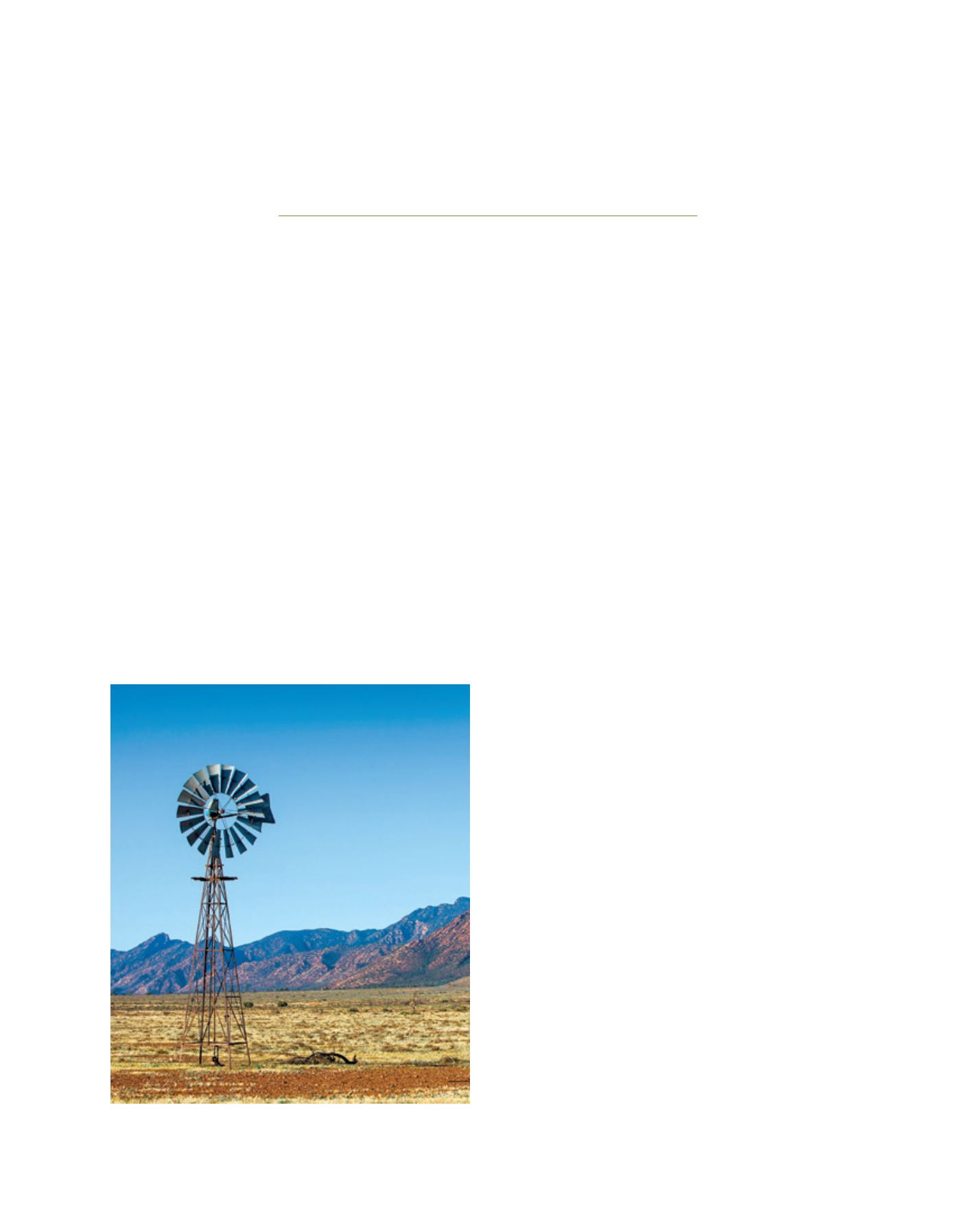

[
] 119
Australia prepares for a
cycle of extreme droughts
Professor Craig Simmons, Director, National Centre for Groundwater Research and Training, Australia
C
limate change projections do not augur well for
Australia, with forecasts of more severe droughts
for a sun-baked nation where water is already a
precious commodity.
The oldest continental landmass on Earth is also the driest
after Antarctica. It is characterized by a cycle of droughts
which parch the heavily weathered landscape eroded over
millions of years. About a third of the continent has so little
rain that it is effectively desert. Just over two-thirds of main-
land Australia receives less than 500 millimetres of rain a
year and is classified as arid or semi-arid. As the planet
warms, weather records across Australia are tumbling, with
hotter, drier conditions over much of central and southern
Australia. Climate scientists are worried that even less rain
will fall in future in the areas where it is needed most.
The so-called millennium drought which gripped
south-west Western Australia, south-east South Australia,
Victoria and northern Tasmania was described by the
Bureau of Meteorology (BoM) as without historical prec-
edent. Temperatures were about 1 degree Celsius hotter
than previously recorded droughts and the duration —
from 1995 until 2012 in some areas — was the longest
ever known.
Drought in Australia coincides with the cyclical weather
pattern El Niño when a band of warm ocean water rises off
the coast of South America and expands westward across
the Pacific Ocean to displace colder waters. This is associ-
ated with decreased rainfall for Australia, very hot daytime
temperatures and earlier, more extreme fire seasons.
Nine of the ten driest winter-spring periods on record for
eastern Australia have occurred during El Niño years. In the
Murray-Darling basin — the so-called food bowl of Australia
— winter-spring rainfall during El Niño events since 1900
averaged 28 per cent lower than the long-term average.
The opposite phase of El Niño is La Niña when Australia
faces a higher risk of flooding, lower temperatures and
more tropical cyclones. Successive La Niña events during
2010-12 were associated with record rainfall over much of
Australia and some of the biggest floods in living memory.
As climate change takes hold, more extreme versions of
the El Niño Southern Oscillation cyclical weather pattern are
expected to result in more frequent flooding and drought.
Modelling of weather data by scientists at BoM and the
national science agency CSIRO shows that under projected
global warming scenarios Australia can expect ‘super’ El
Niños that are more intense, and that they are likely to occur
twice as often.
Their fears are already being realized. Just three years
after the official end of the millennium drought in 2012,
BoM declared a major new El Niño event. By mid-2015
Queensland was in the grip of an unprecedented drought
covering a record 80 per cent of the state. Rainfall was
also lower across large tracts of southern Australia
and western Tasmania.
Such extreme weather behaviour is in line with the latest
dire predictions from the United Nations Intergovernmental
Panel on Climate Change (IPCC). In its 2014 report, IPCC
said Australia could expect more frequent flooding in some
areas and severe drying in the Murray-Darling basin and in
south-western and south-eastern Australia. These are key
agricultural regions in arid and semi-arid areas and, if the
worst-case scenario is realized, production could fall by a
disturbing 40 per cent.
Image: istock.com/BenGoode
Various initiatives have been instigated to gauge Australia’s current and
future water use and inform sustainable planning and management
L
iving
L
and
















